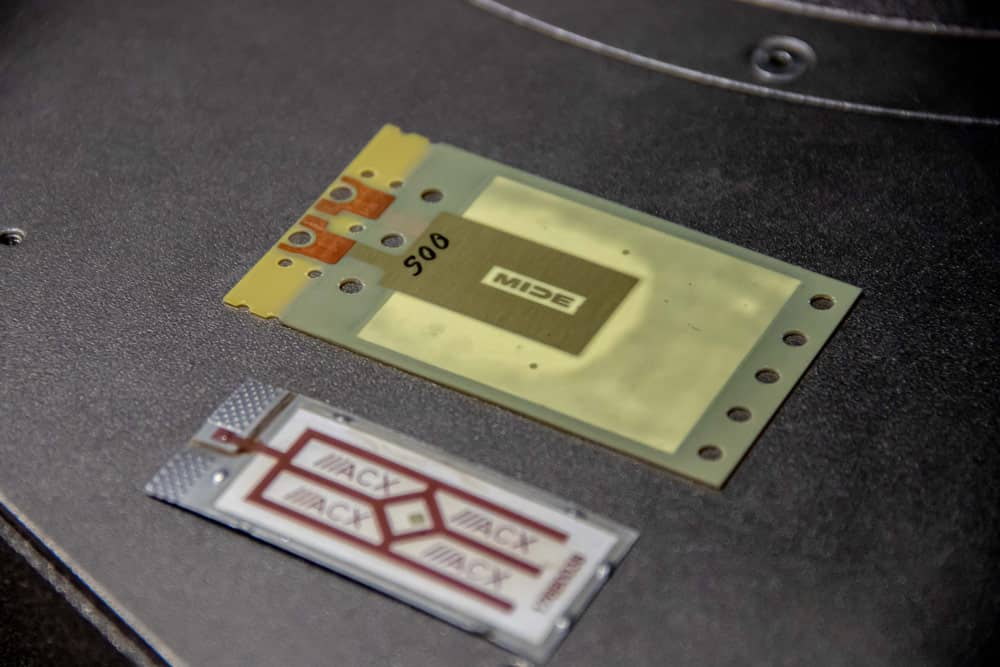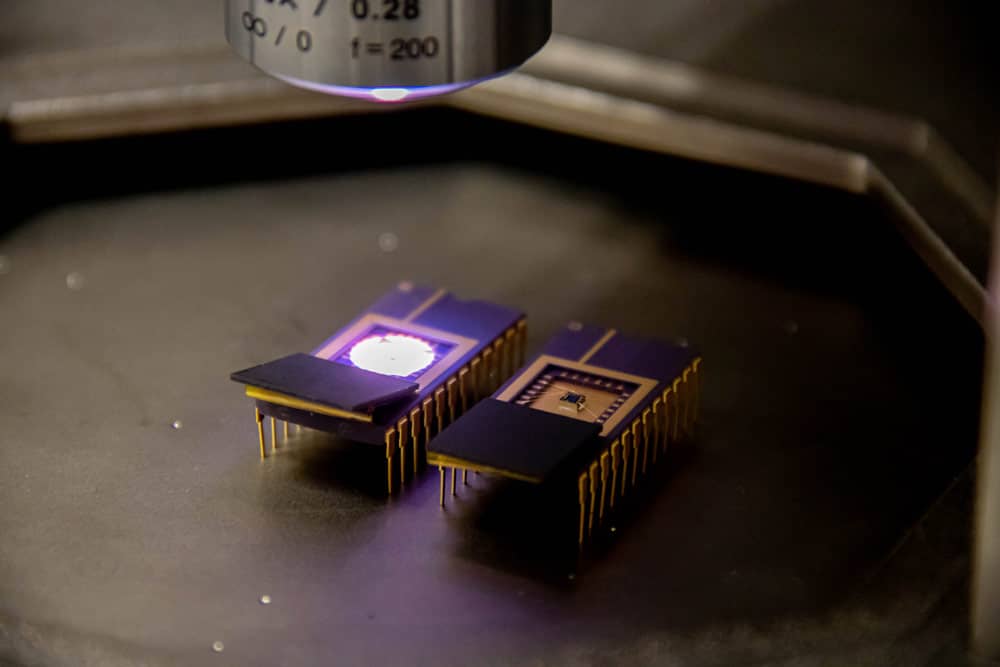Pacemakers and cochlear implants are wonders of modern engineering. However, these tools need to have their batteries replaced periodically. Over the past six years, Dr Ing. Francarl Galea has delved into the world of microelectronics and developed a new integrated circuit that is promising to solve that and many more problems.
‘The energy harvesting field is exploding,’ explains Dr Ing. Francarl Galea, a Ph.D. graduate from the Faculty of Information and Communication Technology at the Department of Microelectronics and Nanoelectronics, University of Malta. The energy harvesting field concerns itself with capturing ambient energy and converting it into electricity. Galea’s integrated circuit aims to work in conjunction with a wide range of energy harvesters to improve their power efficiency – enabling us to use a lot more of the energy we harvest.
An energy harvester is a device capable of converting solar, vibrational, heat, and motion energy (among other sources) into electric energy. An energy harvester can power a device just the same as a battery, but its usefulness differs. A battery has a limited lifetime, but an energy harvester can keep working indefinitely. However, the output of an energy harvester is volatile, as its energy source is not reliable. For example, the sun is not always available; therefore, its energy fluctuates over time.
The circuit was implemented in two stages for which two separate prototypes were developed. The circuit technology developed by Galea works alongside energy harvesting devices to make the most of the power they generate. The first circuit has three functions: 1. rectification, to be compatible with both alternating current (AC) and direct current (DC) energy harvesters; 2. maximum power point tracking; and 3. energy storage, to store energy for when the energy harvester cannot capture energy. The second prototype is responsible for generating a regulated, constant, and clean output voltage. All this inside a tiny chip without any microprocessor, to make it as compact as possible.

The circuits are very small, measuring 1 mm by 1.5 mm, but their potential exceeds their size. While most devices use a battery to draw power, in certain scenarios, this can prove problematic. You would not want an oversized battery powering your pacemaker. ‘There are applications where energy harvesters are better than batteries,’ explains Galea, ‘namely if its replacement is an issue – like in pacemakers or tracking birds. With an energy harvester, you do not need to replace the battery. While batteries are stable sources of stored energy, the problem with energy harvesters is that their input power is dependent on its source,’ for example, if a solar energy harvester does not have access to sunlight. It is here, however, that Galea’s research shines. His integrated circuit makes energy harvesters much more viable, since it can regulate and store energy for later use. It functionally tries to solve the shortcomings of energy harvesters.

Electrical Flexibility
How does the converter work, then? It is controlled by a maximum power point tracking algorithm – to extract the maximum amount of power from the energy harvester. ‘It is similar to inverters that exist in solar panel cells,’ exemplifies the investigator, ‘but on a much smaller scale and using much less energy than an inverter.’ The converter, unlike most of the circuitry out there, is remarkably versatile. It can work with both AC and DC energy harvesters. AC and DC describe how electricity flows in a circuit. Simply put, while DC is constant and unidirectional, AC flow changes direction periodically. You can find an alternating current when you plug in a television or an electric fan. On the other hand, direct current can be found on large power supplies, like automotive batteries.
Galea’s circuit works in the microwatt and milliwatt scale regime. As he explains, such a small current also presents challenges. The simulations he used to test the circuit showed big differences in comparison with the actual fabricated circuit. Although such a realisation could have proven to be disastrous, it ended up showing the flexibility of the circuit – the investigator concluded that this circuit is able to work with a wide range of current loads, which vary depending on the energy needed.
This flexibility might be one of the greatest innovations of Galea’s work. The integrated circuit was designed to function with different types of energy harvesters. As of right now, it has been tested with solar cells and piezoelectricity (an electric charge developed by crystals under mechanical stress). Nevertheless, the possibilities are limitless. Asked about it, Galea envisions various possible integrations immediately – from fire detectors in forests to tools to sense earthquakes and tsunamis – but that is not really the point, the investigator points out. The true potential of the circuit is not pinpointed to any specific use; rather, it can be used in any design whatsoever, if the use falls within the circuit’s power range.

An iterative process
The road to perfecting the circuit has had its challenges. ‘A circuit costs between €10,000 to €20,000 to fabricate, so you must get it right. Besides that, it usually takes six months to make, so it is a long process. You have a time frame, so if you miss it, you cannot fabricate it for another six months. It is easy to lose time and money. Messing up the circuit can be costly. To mitigate it, we have a lot of simulation tools,’ says Galea. Fortunately, he had the opportunity to develop two working prototypes, which enabled a greater degree of refinement.
‘The power conversion was capable of reaching 64% efficiency,’ declares the investigator, ‘which does not sound a lot, but is good in the integrated circuit field.’ Power efficiency is the difference between the amount of power generated in the energy harvester and the power that reaches the device – generally, some of it gets lost in the process. Galea’s circuit seems to outperform the norm in the field, where integrated circuits usually accomplish between 13% and 60% power efficiency. ‘Although, it is possible to make the power conversion even more efficient,’ clarified Galea. All it takes is some redesign using an external power converter. However, that is not part of his investigation. It is collaborative work, after all. In fact, Galea actively considered the reusability of the circuit in a multitude of contexts by different designers. That speaks to the global ambitions of his work, which was thought of as a solution for universal problems in its field. Once again, the University of Malta shows its international orientation. Its investigators lift one stone, so others might use it to build a wall.
Prof. Ing. Owen Casha was the principal supervisor for this research, while Prof. Ivan Grech was the co-supervisor.
This article was produced in collaboration with the University of Malta’s Doctoral School.
The research was funded by the ENDEAVOUR Scholarship Scheme (Malta). The scholarship was part-financed by the European Union – European Social Fund (ESF) under Operational Program II – Cohesion Policy 2014-2020, “Investing in human capital to create more opportunities and promote the wellbeing of society”.In addition to the ENDEAVOUR Scholarship Scheme, Dr Ing. Francarl Galea was also awarded a Hi-Silicon Sponsorship Program. This sponsorship covered the costs of the fabrication of an integrated circuit prototype.







Comments are closed for this article!